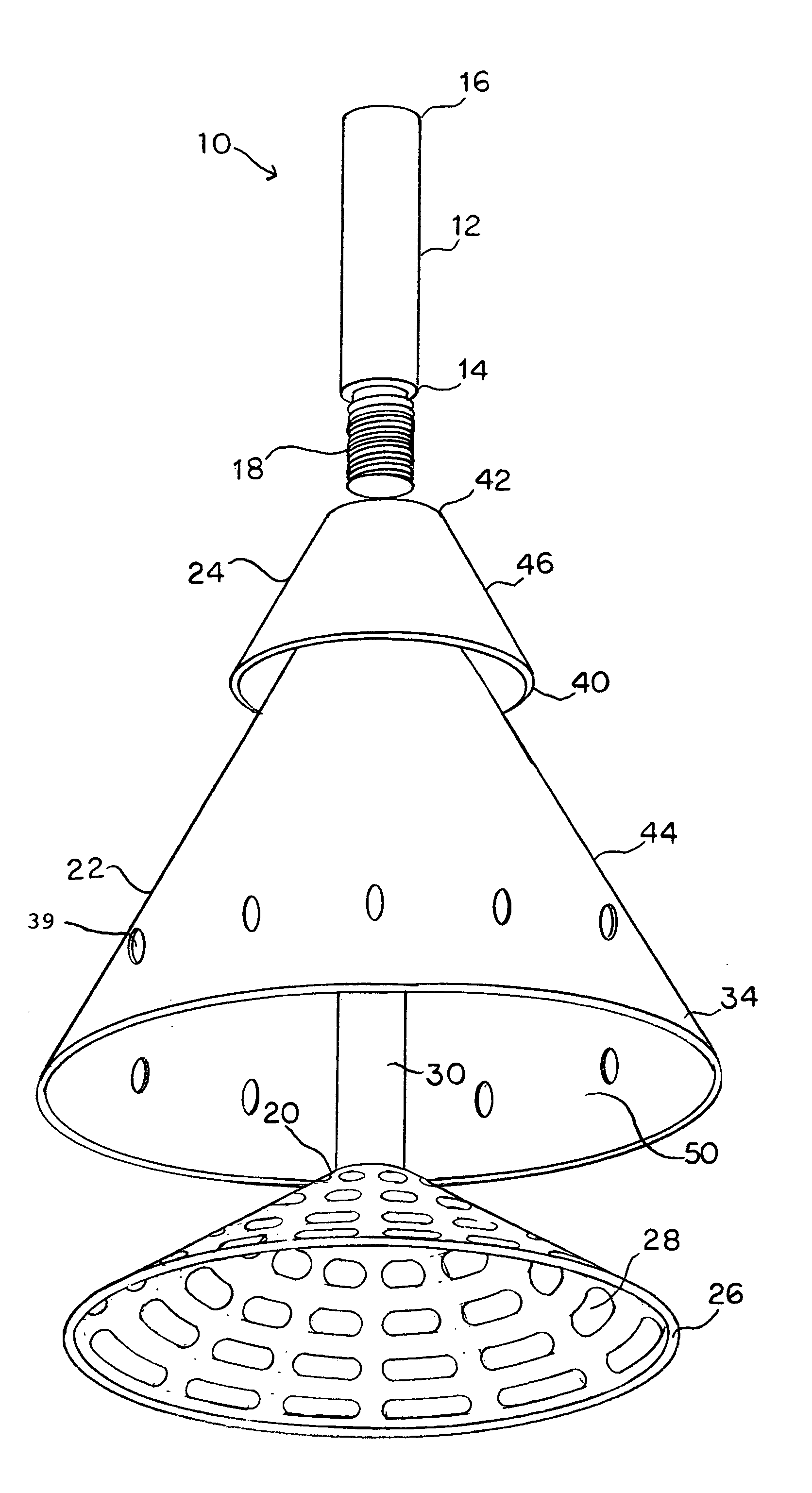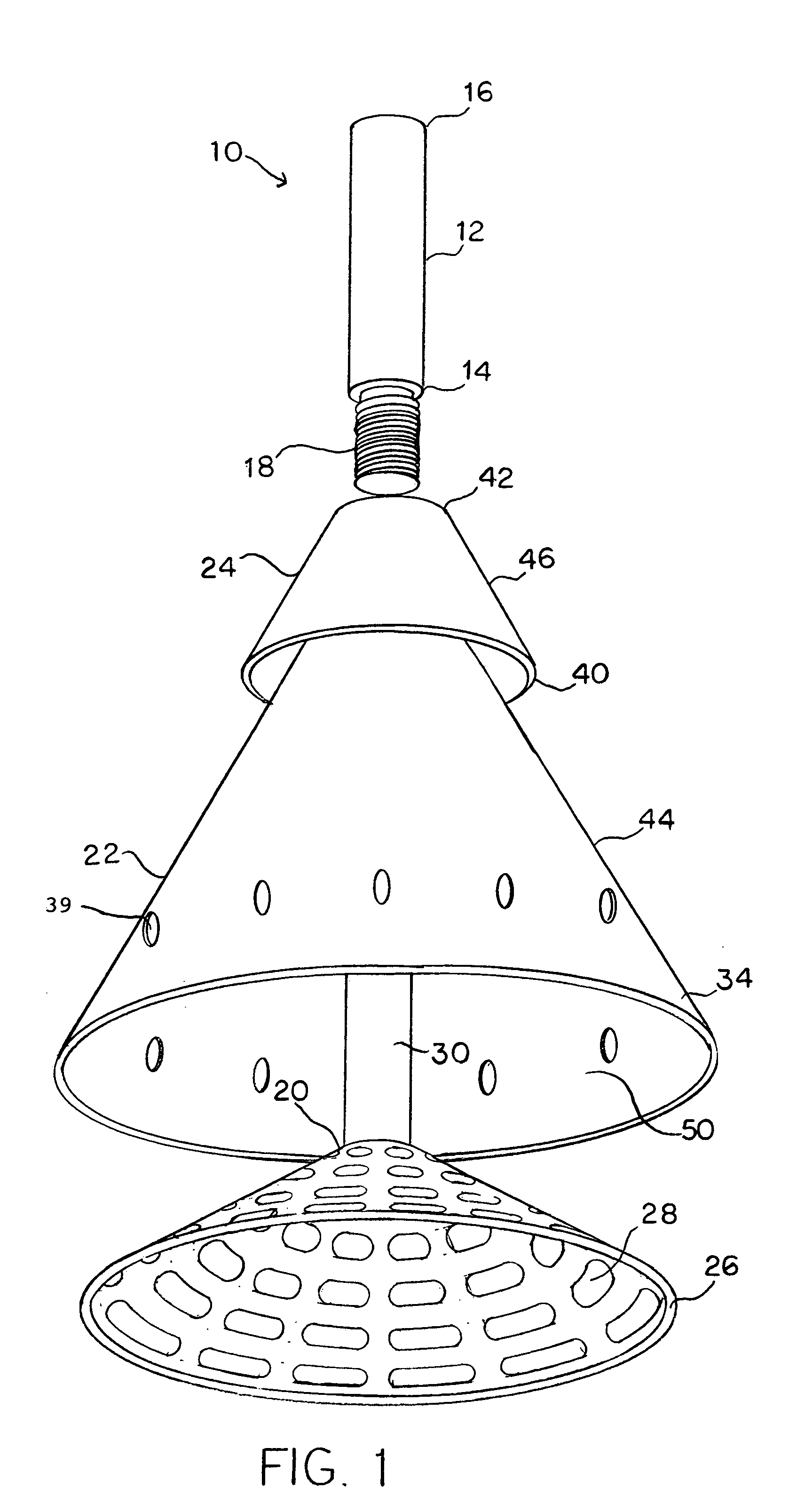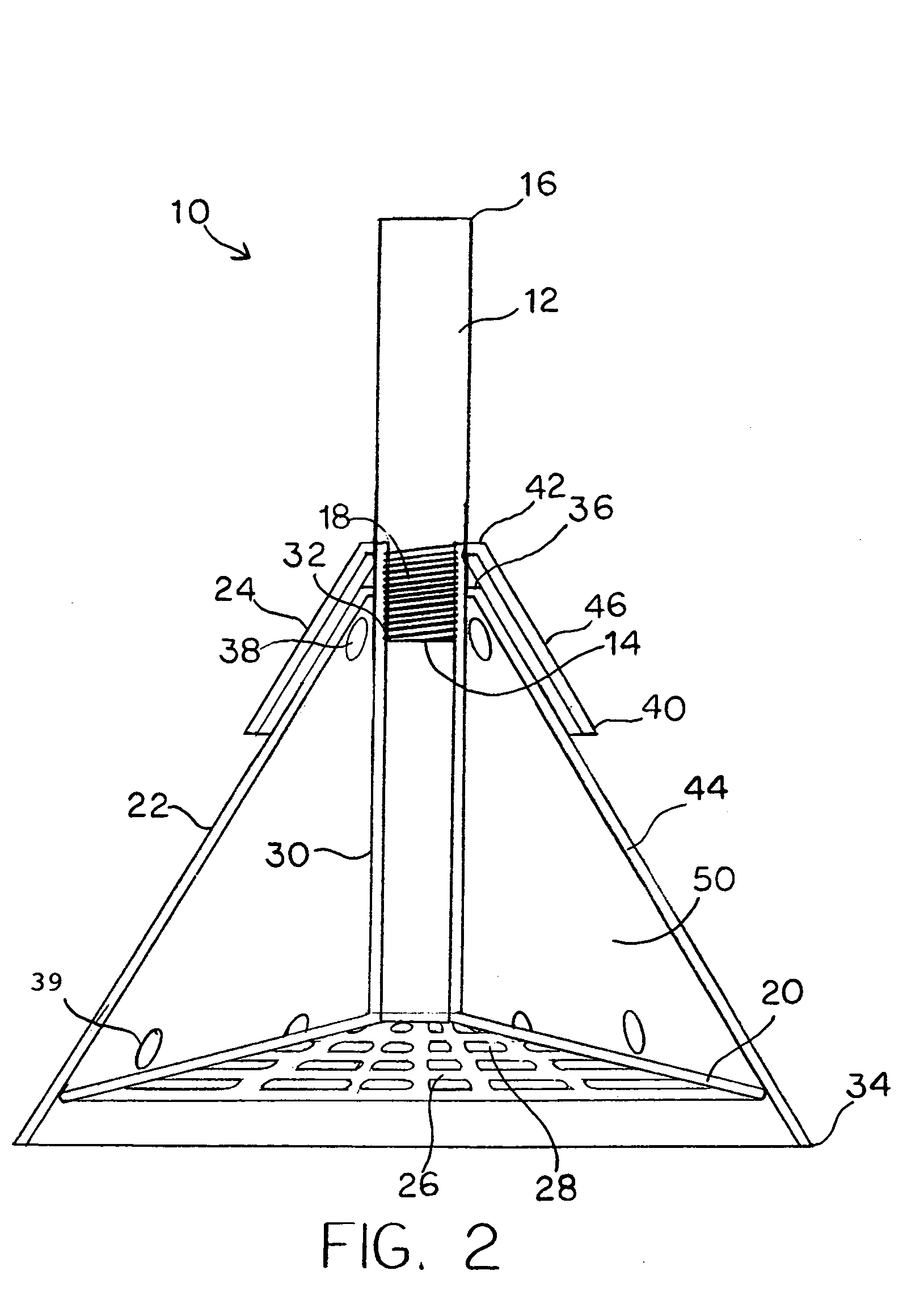Manual washing machine
a manual washing machine and washing machine technology, applied in the field of manual washing machines, can solve the problems of large and difficult storage or transportation, unusable devices such as sportsmen, sailors, individuals, etc., and achieve the effects of less physical labor, less water, and limited damage to clothes
- Summary
- Abstract
- Description
- Claims
- Application Information
AI Technical Summary
Benefits of technology
Problems solved by technology
Method used
Image
Examples
first embodiment
[0021]the present invention is shown in FIGS. 1–3.
[0022]Referring now to FIG. 1, a perspective assembly view of a first embodiment of the present invention is shown. In this embodiment, a handle 12 having a first end 14 extending to a second end 16 is shown. This handle 12 is connected by a connection means 18 to a washing body 20 that fits within a sheath 22 which in turn fits within a splash cone 24. The washing body 20, the sheath 22 and the splash cone 24 all connect to the handle 12. The washing body 12 is connected by the connection means 18.
[0023]While in this embodiment the handle 12 is shown as having a relatively short length, it is to be understood that the length of the handle may be variously modified to accommodate a variety of different requirements dependent upon the application or the person utilizing the device. For example, the handle may be altered to be taller or shorter depending upon whether or not its use is intended to be by a person who is standing or sitti...
PUM
 Login to View More
Login to View More Abstract
Description
Claims
Application Information
 Login to View More
Login to View More - R&D
- Intellectual Property
- Life Sciences
- Materials
- Tech Scout
- Unparalleled Data Quality
- Higher Quality Content
- 60% Fewer Hallucinations
Browse by: Latest US Patents, China's latest patents, Technical Efficacy Thesaurus, Application Domain, Technology Topic, Popular Technical Reports.
© 2025 PatSnap. All rights reserved.Legal|Privacy policy|Modern Slavery Act Transparency Statement|Sitemap|About US| Contact US: help@patsnap.com



